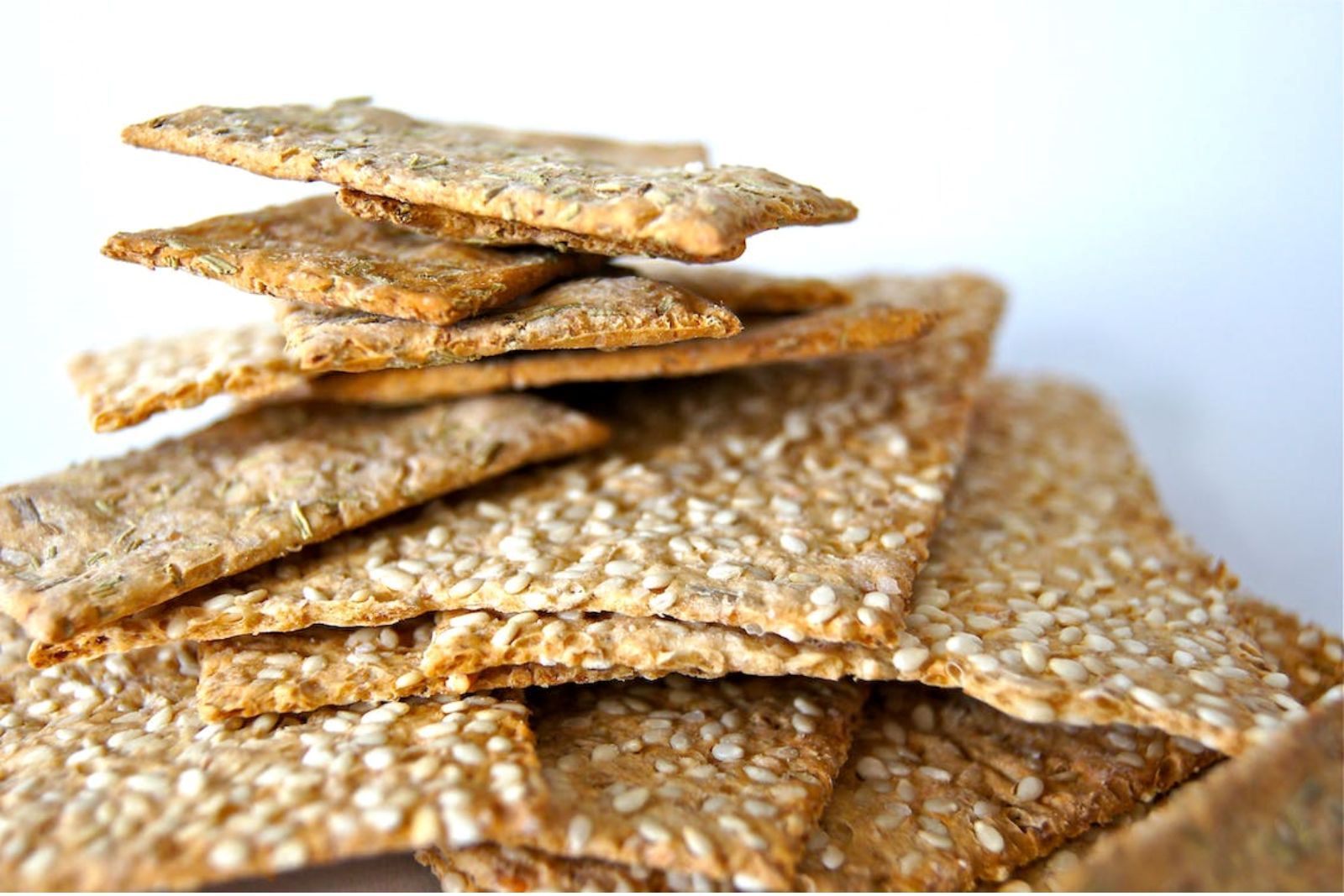
Biscuits, in the context of this article, are a type of baked bread product. They can refer to soft and fluffy bread often served with gravy in the United States or sweet, crisp cookies in the United Kingdom and other Commonwealth countries. Freezing biscuits is a convenient way to keep them fresh and ready to enjoy whenever you have a craving for these delectable treats. Whether you have baked a large batch of biscuits or want to save some leftovers for later, proper freezing techniques can help preserve their taste and texture.
Here is a step-by-step guide on how to freeze biscuits:
Step 1: Allow the biscuits to cool down
After baking your biscuits, it is important to allow them to cool down completely before freezing them. This step is essential to maintain the quality and taste of the biscuits during the freezing process.
When biscuits are warm, moisture is released from their surface. If you place warm biscuits directly into the freezer, the moisture can turn into condensation and form ice crystals on the biscuits. This can lead to freezer burn, which can affect the texture and flavor of the biscuits.
By allowing the biscuits to cool on a wire rack, you allow them to release excess heat and moisture. This helps them reach room temperature gradually, reducing the risk of condensation when they are placed in the freezer.
Cooling the biscuits on a wire rack also promotes air circulation around the biscuits, allowing them to cool more evenly. This helps to maintain their texture and prevent them from becoming soggy.
Step 2: Determine the portion size
When freezing biscuits, it’s important to consider whether you want to freeze them as a whole or in individual portions. The decision will depend on your specific needs and preferences, as well as how you plan to use the biscuits later on.
If you anticipate using the biscuits individually, it is recommended to portion them before freezing. This allows for convenient usage and thawing of the exact number of biscuits you need at any given time. For example, if you often enjoy a single biscuit as a snack or want to use them as a side with individual meals, portioning them before freezing will save you time and effort later.
On the other hand, if you plan to thaw and reheat all the biscuits at once, it might be more convenient to freeze them as a whole. This is suitable if you frequently serve biscuits as a complete batch or for occasions where you want to have multiple biscuits available for a group.
Step 3: Wrap each biscuit tightly
To ensure that your frozen biscuits maintain their quality and freshness, it’s crucial to wrap each biscuit tightly in plastic wrap. This step helps protect them from freezer burn and prevents air exposure, which can lead to the deterioration of texture and flavor.
When biscuits are exposed to air in the freezer, they are vulnerable to freezer burn. Freezer burn occurs when the moisture within the biscuits evaporates and forms ice crystals on the surface. This can result in a dry and unappetizing texture. By tightly wrapping each biscuit in plastic wrap, you create a barrier that helps prevent air from coming into contact with the biscuits, reducing the risk of freezer burn.
Individual wrapping of the biscuits also offers practical benefits. It allows for easier portioning and thawing later on. When you have each biscuit wrapped individually, you can easily take out the exact number of biscuits you need without thawing the entire batch. This is particularly convenient when you only want to enjoy a few biscuits at a time or if you’re serving them individually.
Furthermore, the tight wrapping helps maintain the biscuits’ moisture and prevents them from absorbing odors or flavors from other foods in the freezer. This helps to preserve the original taste and quality of the biscuits.
Step 4: Wrap in aluminum foil
After wrapping each biscuit tightly in plastic wrap, it’s recommended to provide an extra layer of insulation by wrapping them in aluminum foil. This additional step enhances the preservation of moisture and helps prevent any potential flavor loss during the freezing process.
Aluminum foil acts as a barrier against moisture and air, providing an added level of protection to the biscuits. It helps to maintain the biscuits’ moisture content by preventing excess moisture from evaporating and ice crystals from forming on the surface. This further reduces the risk of freezer burn and helps preserve the biscuits’ texture and taste.
In addition to moisture preservation, the aluminum foil wrap also helps to prevent any potential flavor transfer or absorption. When frozen foods are stored together, they can exchange flavors and odors. By wrapping the biscuits in aluminum foil, you create an additional barrier that reduces the chances of them absorbing any unwanted flavors or odors from other foods in the freezer.
The combination of plastic wrap and aluminum foil provides a double layer of protection that helps maintain the biscuits’ freshness, texture, and flavor throughout the freezing period. It ensures that when you eventually thaw and reheat the biscuits, they will taste as delicious as when they were freshly baked.
Step 5: Label and date the package
Properly labeling and dating the package containing your frozen biscuits is an important step to stay organized and ensure that you use them within the appropriate time frame. This practice helps you easily identify the contents, keep track of their freezing duration, and avoid any confusion later on.
When labeling the package, use a marker or attach a label to clearly indicate that it contains biscuits. This makes it easier to identify among other frozen items in your freezer, especially if you have different types of food stored.
Additionally, it’s crucial to include the freezing date on the label. Write down the date when you initially placed the biscuits in the freezer. This information is valuable for determining the recommended storage duration and ensuring that you use the biscuits within the appropriate time frame. Generally, biscuits can be stored in the freezer for up to three months without a significant loss in quality.
Labeling and dating the package also help in maintaining proper food rotation. By knowing the freezing date, you can prioritize using older batches of biscuits before newer ones, ensuring that none of them go past their recommended storage period.
Clear and visible labeling eliminates any confusion or guesswork when it comes to the contents and freezing duration of your biscuits. It allows for easy identification and helps you plan your meals or baking needs accordingly.
Step 6: Place the wrapped biscuits in the freezer
Once you have wrapped your biscuits tightly in plastic wrap and aluminum foil, it’s time to place them in the freezer for long-term storage. Proper placement and organization in the freezer ensure that the biscuits freeze evenly and maintain their quality over time.
When placing the wrapped biscuits in the freezer, it’s best to arrange them in a single layer. This allows for quicker and more even freezing. If the biscuits are stacked on top of each other, it may take longer for the inner biscuits to freeze completely, potentially leading to uneven texture or taste when thawed.
Once the biscuits are completely frozen, you can stack them or store them in a more space-efficient manner if desired. However, ensure that they are stored away from strong-smelling foods in the freezer. Biscuits can absorb odors easily, so it’s important to keep them separated from other foods that may have strong flavors or aromas. This will help preserve the original taste and ensure that the biscuits retain their intended flavors when thawed and reheated.
Other related questions
How can biscuits last in the freezer?
Biscuits can last in the freezer for up to three months without a significant loss in quality. Properly wrapping the biscuits in plastic wrap and aluminum foil helps prevent freezer burn and maintain their texture and flavor. Additionally, labeling and dating the package, as well as storing them away from strong-smelling foods, contribute to their longevity in the freezer.
How do I thaw and reheat frozen biscuits?
To defrost biscuits, transfer them from the freezer to the refrigerator and let them thaw overnight. This gradual thawing process helps maintain the biscuits’ texture and prevents moisture loss. Once thawed, you can reheat the biscuits in a preheated oven or toaster oven at a low temperature (around 325°F/163°C) until warmed through. Keep an eye on them to prevent over-browning.
Can I refreeze biscuits?
Refreezing biscuits is generally not recommended. When biscuits are thawed, moisture is released, and their texture may change. Additionally, refreezing can increase the risk of bacterial growth and affect the overall quality of the biscuits. It’s best to only thaw the desired amount of biscuits needed and consume them within a reasonable timeframe.
How do I know if the biscuits have gone bad after being frozen?
To determine if frozen biscuits have gone bad, check for signs of spoilage such as a foul odor, mold growth, or an unusual texture. If the biscuits have developed an off-putting smell or visible mold, they should be discarded. Additionally, if the texture is excessively dry, soggy, or has an unpleasant taste, it is an indication that the biscuits may have deteriorated and should not be consumed.
Can I freeze biscuits with toppings or fillings?
While plain biscuits freeze best, you can freeze biscuits with toppings or fillings. However, keep in mind that the texture and appearance of the toppings or fillings may change slightly after freezing. It’s recommended to wrap them tightly and take extra care when thawing to minimize any potential texture changes.
Can I freeze biscuits with different flavors or variations?
Yes, you can freeze biscuits with different flavors or variations. Whether they are plain, savory, or sweet biscuits, the freezing process remains the same. Ensure that you wrap each biscuit tightly in plastic wrap and aluminum foil to maintain their freshness and prevent freezer burn. Thaw and reheat them according to the original baking instructions for the best results.
Can I freeze biscuits that have been glazed or frosted?
Yes, you can freeze biscuits that have been glazed or frosted, but it’s important to consider some factors. Glazed or frosted biscuits may experience some texture changes after freezing and thawing, and the glaze or frosting may become slightly softer or less firm. To preserve their appearance and texture as much as possible, it’s recommended to freeze the biscuits without the glaze or frosting and apply it after thawing and reheating, if desired. Alternatively, you can freeze them with the glaze or frosting, understanding that there may be some minor changes in texture upon thawing.
Can I freeze biscuits that contain perishable ingredients like cheese or butter?
Yes, you can freeze biscuits that contain perishable ingredients like cheese or butter. However, it’s important to note that the texture and flavor of the perishable ingredients may slightly change upon freezing and thawing. To minimize potential texture changes, it’s recommended to freeze the biscuits as soon as possible after baking and wrap them tightly in plastic wrap and aluminum foil to maintain freshness. When reheating, follow the original baking instructions to ensure the best results.
Are there any special considerations for freezing gluten-free or vegan biscuits?
When freezing gluten-free or vegan biscuits, there are a few special considerations to keep in mind. Gluten-free biscuits may benefit from being slightly under-baked before freezing to prevent them from becoming too dry. It’s important to use suitable gluten-free or vegan wraps to ensure proper insulation and protection from freezer burn. Additionally, labeling the package with specific dietary information can be helpful for easy identification and to avoid cross-contamination in the freezer.
Can I freeze homemade biscuits as well as store-bought ones?
Yes, you can freeze both homemade biscuits and store-bought ones. The freezing process for homemade and store-bought biscuits is essentially the same. Ensure that you properly wrap them in plastic wrap and aluminum foil to maintain their freshness and protect them from freezer burn. Thaw and reheat them according to the original baking instructions for the best taste and texture.








